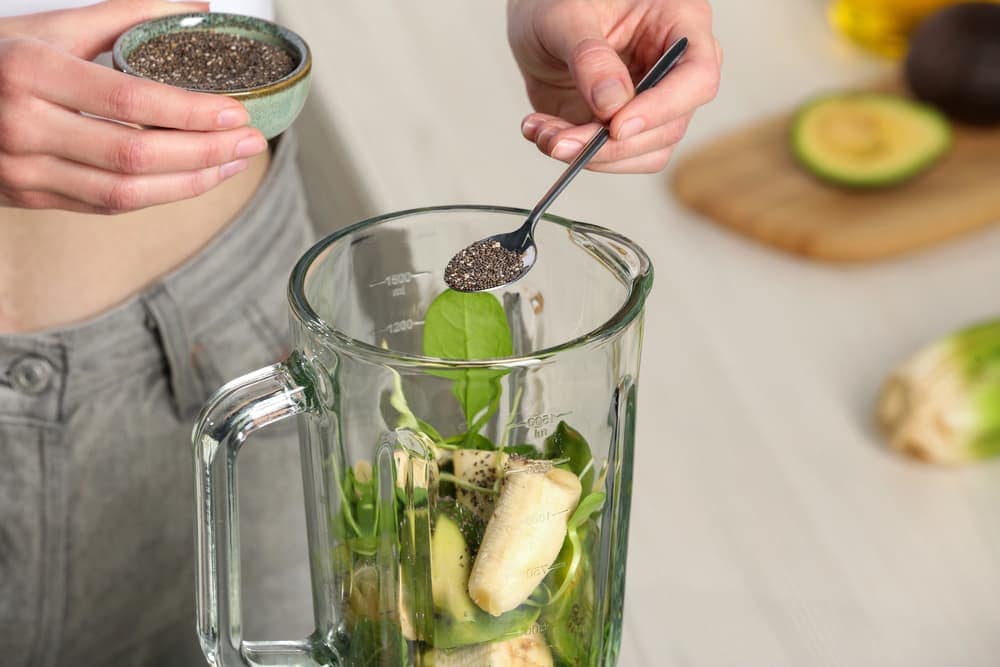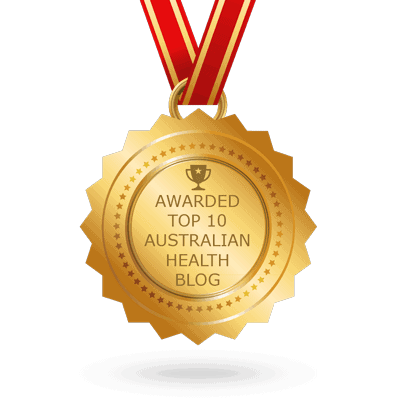The best plant-based protein sources for active individuals like you are complete proteins or food pairings that give your body all nine essential amino acids.
Great choices include soy, quinoa, and seeds. In Australia, you can also find many excellent plant-based protein products.
Protein promotes muscle recovery, boosts your performance, and keeps you healthy.
To help you gain these benefits, we’ll explore the best vegan protein sources available in Australia and how to make the most of them. We also highlight some smart tips to optimise your plant-based protein intake.
Complete Plant-Based Protein for Active Individuals
In building muscle and recovering after workouts, not all proteins are the same. Some plant-based foods are complete proteins, meaning they contain all nine essential amino acids your body can’t produce on its own.
These amino acids, especially leucine (a key branched-chain amino acid or BCAA), are vital for muscle repair, growth, and overall performance. That’s why plant-based protein for active individuals is all about choosing complete proteins that keep your body strong and ready to recover.
Here’s a table summarising the benefits of the best complete plant-based proteins. Read further to know more about each example.
| Complete Protein Source | Key Benefits |
| Soy (tofu, tempeh, soy milk) | Builds lean muscle; speeds recovery |
| Quinoa | High in fibre; easy to digest |
| Amaranth | Rich in iron and magnesium |
| Buckwheat | Supports heart health and endurance |
| Hemp Seeds | Great omega-3 balance; supports joint health |
| Chia Seeds | High in fibre; aids hydration and energy |
| Spirulina | Dense in antioxidants and iron |
1. Soy-Based Products
Tofu and tempeh, both soy-based products, are among the best vegan protein sources for supporting muscle growth and recovery. Their amino acid makeup is comparable to animal protein.
- What they are: Foods made from soybeans that deliver complete protein, supporting muscle repair and recovery.
- Sources: Tofu, tempeh, edamame, soy milk, and miso
- How to use:
- Grill or stir-fry tofu and tempeh for hearty meals.
- Toss edamame into salads, rice bowls, or as a snack.
- Blend soy milk into smoothies or use it with cereal.
- Add miso to soups, dressings, or marinades.
- Benefits for Active People:
- Provides all nine essential amino acids for muscle recovery
- Rich in leucine, which helps trigger muscle protein synthesis after workouts
- Shown in studies to support lean muscle growth and endurance performance
- Easy to include in meals, making it simple to meet higher protein needs
2. Quinoa
Quinoa is a nutrient-dense seed that’s often prepared and enjoyed like a grain. It’s naturally gluten-free, easy to digest, and a good choice for athletes needing quality protein and lasting energy.
- What it is: A gluten-free seed and naturally a complete protein often eaten like a grain.
- Sources: White, red, or black quinoa, plus quinoa flakes and flour
- How to use:
- Cook as a base for salads, breakfast bowls, or side dishes.
- Use quinoa flakes in porridge or baking.
- Add to soups or stews for extra protein.
- Benefits for Active People:
- Supplies all nine essential amino acids for recovery
- High in complex carbs for steady workout energy
- Rich in magnesium, which helps reduce muscle cramps and fatigue
3. Amaranth
People have eaten amaranth, an ancient grain-like seed, for thousands of years. Like quinoa, it’s naturally a complete protein and provides a brilliant mix of amino acids, minerals, and fibre.
- What it is: A gluten-free seed often used as a grain substitute or pseudocereal.
- Sources: Whole amaranth seeds, puffed amaranth, and amaranth flour
- How to use:
- Cook into porridge or pilaf-style dishes.
- Mix puffed amaranth into energy bars or granola.
- Use amaranth flour in baking for added protein.
- Benefits for Active People:
- Supplies all nine essential amino acids for muscle repair
- High in iron and magnesium to support endurance and recovery
- Rich in fibre, providing steady energy during training and competition

4. Buckwheat
Even though it’s called buckwheat, it’s not related to wheat and is naturally gluten-free. It features a unique blend of nutrients that support athletic performance and recovery.
- What it is: A nutrient-rich seed and complete protein often used in gluten-free diets.
- Sources: Buckwheat groats, flour, and noodles (like Japanese soba)
- How to use:
- Cook groats as a base for bowls or porridge.
- Use buckwheat flour in pancakes, breads, or baked goods.
- Enjoy soba noodles for a protein-packed meal.
- Benefits for Active People:
- Provides all nine essential amino acids to aid recovery
- Contains antioxidants that help reduce exercise-related inflammation
- Rich in magnesium and rutin, supporting heart health and endurance
5. Hemp Seeds
Hemp seeds are tiny nutritional powerhouses that pack in complete protein along with healthy fats. What makes them stand out for athletes is their ideal omega-3 to omega-6 ratio. This healthy fat content supports joint health and reduces post-exercise inflammation.
- What they are: Small seeds from the hemp plant, rich in protein and essential fatty acids.
- Sources: Whole hemp seeds, shelled hemp hearts, and hemp protein powder
- How to use:
- Sprinkle on smoothies, yogurt, or oatmeal.
- Blend into protein shakes or energy balls.
- Add to salads or baked goods for an extra nutritional boost.
- Benefits for Active People:
- Complete protein to fuel muscle recovery and growth
- Anti-inflammatory properties support joint and tissue health
- Provides steady energy and helps reduce workout fatigue
6. Chia Seeds
Chia are small seeds that absorb liquid, forming a gel. This pudding-like mix helps with hydration and endurance during workouts.
- What they are: Tiny seeds known for their protein, fibre, and ability to absorb water.
- Sources: Whole chia seeds, ground chia, and chia protein powders
- How to use:
- Make chia pudding for a protein-rich snack.
- Stir into smoothies, oats, or yoghurt.
- Add to baked goods, breads, or energy bars.
- Benefits for Active People:
- Provides all nine essential amino acids to aid muscle repair
- High fibre and slow-digesting carbs for sustained energy
- Gel-like quality helps maintain hydration during exercise

7. Spirulina
People consider spirulina, a type of blue-green algae, a superfood. Its nutrient profile makes it a good choice for athletes to recover quickly and combat exercise stress. As a complete protein, it’s also a fantastic source of antioxidants.
- What it is: A protein-rich algae loaded with vitamins, minerals, and antioxidants.
- Sources: Spirulina powder or tablets
- How to use:
- Blend into smoothies, juices, or energy shots.
- Add to homemade protein bars or energy balls.
- Benefits for Active People:
- Supplies all essential amino acids for lean muscle repair
- Antioxidants help reduce oxidative stress from intense training
- Provides iron to improve oxygen delivery and stamina
Complementary Plant-Based Protein Pairings
Most plant foods are incomplete proteins. These lack one or more of the nine essential amino acids your body needs for muscle repair and recovery.
The solution is simple: combine them! Known as complementary pairing, this strategy balances out amino acids to create a complete protein profile.
Also, you don’t need to eat them in the same meal. Enjoying a variety of foods throughout the day works just as well.
Here are some easy and tasty pairings you can try:
- Legumes + Grains
- Rice and beans
- Hummus (chickpeas) with pita bread
- Lentil soup with whole-grain bread or crackers
- Pasta tossed with peas
Why it works: Legumes supply amino acids that grains lack, and vice versa. For instance, beans provide lysine, which rice lacks. Rice contributes methionine and cysteine, which are limited in beans. Together, they’re a complete protein.
- Legumes + Nuts and Seeds
- Chickpea salad with sunflower seeds
- Almonds paired with lentils
- Peanut butter on whole-wheat toast
Why it works: Nuts and seeds fill in amino acid gaps from legumes, making these combos powerful for recovery. Peanut butter, for example, adds the amino acid lysine that bread lacks.
- Nuts and Seeds + Grains
- Oatmeal topped with almonds
- Whole-wheat bread with tahini (sesame seed paste)
Why it works: Grains and seeds team up to cover missing amino acids, delivering balanced fuel and long-lasting energy. Oatmeal and almonds work, for example, as they provide lysine, methionine, and cysteine that the other lacks.
By mixing grains, legumes, nuts, and seeds in different ways, you’ll have plenty of delicious meals that provide all nine essential amino acids.

How to Maximise Your Plant-Based Protein Intake
Getting enough protein on a plant-based diet is simple if you plan smartly. The key is to focus on variety and balance. Here are some tips:
- Plan Post-Workout Snacks: Recovery comes first. Aim for 0.2 to 0.5g protein per kilogram of body weight within 30 to 45 minutes after training (e.g., soy milk smoothie with nut butter).
- Eat a Variety: Rotate lentils, quinoa, tofu, tempeh, and edamame (some of the best vegan protein sources) to cover nutrients and amino acids. This tip keeps your meals interesting and balanced, too.
- Combine Complementary Proteins: Pair grains and legumes (like rice and beans or hummus with wholegrain bread) for complete proteins that support muscle repair.
- Mix Protein Powders if Needed: A good plant protein powder (soy, pea, hemp, or blends) helps you consistently meet daily protein goals.
- Snack Smart: Choose high-protein snacks like roasted chickpeas, nuts and seeds, or whole-food protein bars to fuel between workouts.
- Consider Fortified Plant Milks: Soy or pea-based options add protein, calcium, and B12, which are key for performance and bone health.
- Consult a Professional: For athletes with specific targets (muscle gain, endurance, or weight management), a sports dietitian can tailor a plan to maximise results.
All these tips are helpful, but the first three (post-workout snacks, variety, complementary pairing) are the most essential for recovery and growth. The rest help fine-tune your diet for consistency and long-term performance.
Fuel Your Performance with Smart Plant Protein Choices
Plant-based protein can give you all the strength and recovery support you need to stay active and reach your goals.
The key is balance. Mix up your sources, combine foods for complete proteins, and ensure your meals match your training needs. Don’t be afraid to experiment with new recipes, from quinoa bowls to tofu stir-fries, and see what works best for your body.
By choosing the best sources and knowing how to pair plant-based protein for active individuals, you’ll set yourself up for peak performance and lasting health!
Related Questions
1. Is a plant-based diet enough for muscle gain and fitness?
A plant-based diet can fully support muscle growth, endurance, and recovery when well-planned. By eating enough protein from foods like lentils, tofu, and quinoa, you’ll meet all essential amino acid needs. Consistency and balanced meals are key to long-term results.
2. What’s a good high-protein plant-based breakfast for active people?
Breakfast ideas include tofu scramble, overnight oats with chia and hemp seeds, or smoothies blended with plant protein powder. These meals provide sustained energy, complete amino acids, and help kick-start muscle recovery after morning workouts. Check out this article for more energising plant-based breakfast ideas.
3. Do I need protein powder on a plant-based diet?
Protein powder isn’t essential, but it’s a convenient way to meet your needs, especially after workouts or on busy days. Whole foods should be the foundation, while powders (soy, pea, or rice blends) can help bridge any gaps.
- Can Short Workouts Really Boost Daily Energy? - 28 October 2025
- How Can You Build a Balanced Plate for Every Meal? - 27 October 2025
- What Is a Yoga Wheel and How to Use It? - 29 September 2025
